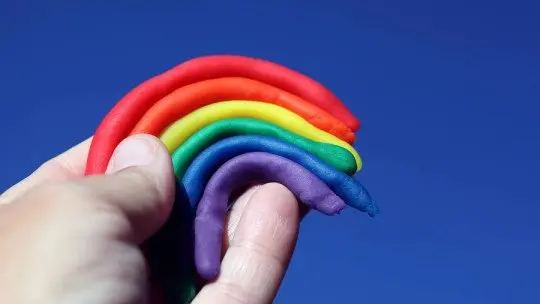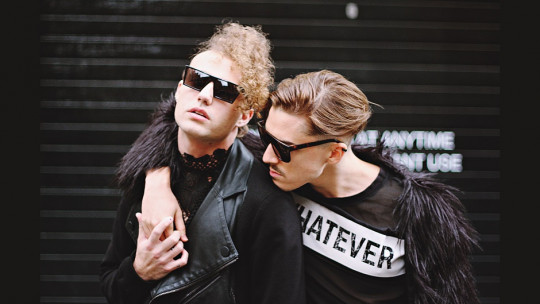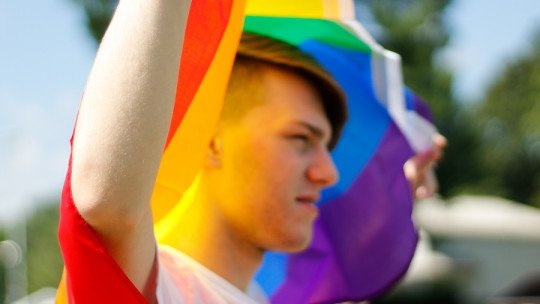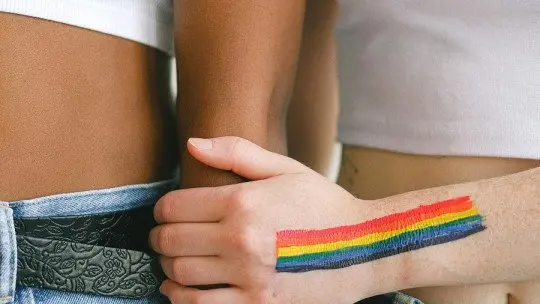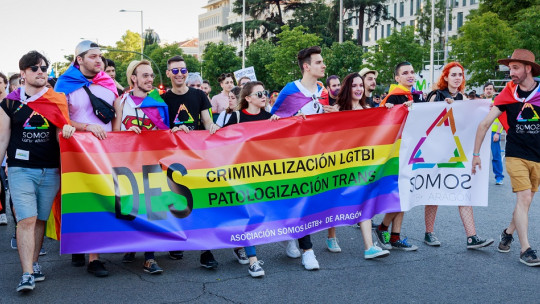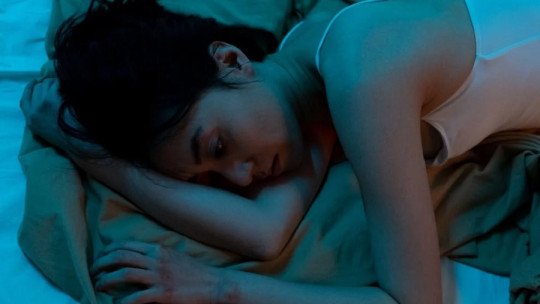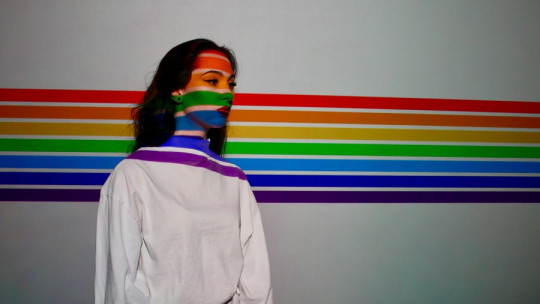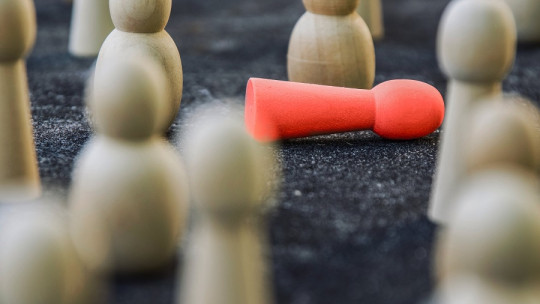
Although progress has been made in terms of LGTBI+ rights, there is still much to do. Lesbians, gays, transsexuals and bisexuals today continue to be victims of stigmatization and victimization.
Focusing on bisexual people, many still see them as half gay, half straight, people who are going through a phase or experimenting with their sexuality, there are those who believe that bisexuality does not exist but is a product of the confusion of those who say they are attracted to both genders.
These and many more ideas are discriminatory and make up biphobia Let’s take a closer look at what it consists of, how it manifests itself and what we can do if we are bisexual people who deny our own sexuality.
What is biphobia?
Biphobia is discrimination against bisexual or “bi” people, who feel romantically and erotically attracted to individuals of both sexes Biphobic behaviors range from unfavorable attitudes toward bisexual people to violence in the form of stalking, harassment, and assault. Biphobia is based on emotions such as contempt, fear and hatred towards bi people, and causes behaviors of exclusion and denial of bi reality.
To understand in greater depth what biphobia is, it is necessary that we comment on a few key ideas about bisexuality. This is defined as romantic, erotic and sexual attraction for both men and women
Although it is colloquially defined as attraction to men and women, it is preferred to speak in terms of sex and not gender because, within bisexuality, attraction to non-binary and transgender people would also be included. Some consider that this would actually be pansexuality, a topic of wide debate that we are not going to discuss here.
A bisexual person can form several types of relationships:
Whatever type of relationship it is, the bisexual person will continue to be bisexual regardless of who they date. Does not change orientation due to having more heterosexual or homosexual relationships Unfortunately, ignorance of this reality leads people to show a whole series of wrong and irrational beliefs about what bisexual people are like.
Although much progress has been made in the rights of the LGTBI+ community, the truth is that today there is still discriminatory behavior towards its members. Although bisexual people have noted great progress in terms of recognition of their sexuality, these have not been as noticeable as in the case of gays and lesbians. In fact, Bisexuals are, on many occasions, victims of double discrimination: on the one hand by heterosexual people and, on the other, by homosexual people.

From the heterosexual side, bisexuals are perceived as people who are confused, who are going through a phase and who are experimenting with their sexuality and who, sooner or later, will grow out of it and return to heteronormality. On the homosexual side, bisexuals are seen as people who have not yet accepted their homosexuality, who are going through a transition phase or even who are repressed homosexuals, homophobes who do not want to recognize that they are gay or lesbian and They show themselves to the world as if they were “half-straight” so as not to disappoint their family
These types of ideas and attitudes towards bisexuality are biphobic. Not recognizing the possibility that a person may feel romantic and erotic attraction towards people of the male and female sex is discriminatory behavior, whether done out of ignorance or completely consciously. All bisexual people want is to be able to love freely and be accepted by society and especially by non-heteronormative people because after all they are also part of the group.
Examples of biphobia
Some properly biphobic behaviors are:
Misconceptions about bisexuality
The ideas that we will see below, although they are often the result of ignorance, are still biphobic ideas that contribute to the stigmatization and discrimination of bisexual people.
1. 50% men and 50% women
One of the most misconceptions about bisexuals is that they like 50% men and 50% women This does not have to be the case and, in fact, in most cases it is not true. It is true that bisexual people are attracted to both genders, but this does not mean that they do not have a certain preference towards one of them.
There are bisexual people who are more attracted to women than men, and vice versa. Bisexuality is not the fact that you like men and women equally, but that you can feel attraction to both sexes. So, if we were to talk in terms of percentages, a person who likes men and women 50/50 is as bisexual as someone who prefers them 80/20 or 25/75.
Besides, These percentages can change throughout life There will be times when a bisexual person prefers to have relationships with men and other times when they will do so with women, without ceasing to be bisexual for that reason.
2. They have unstable relationships and are looking for threesomes
The relationships of bisexuals can be as unstable as those of homosexual and heterosexual people. What determines the stability, quality and duration of a relationship is not the sexuality of its members but many other aspects that have little or nothing to do with whether you are bisexual or not.
It is also worth noting that bisexual people do not seek threesomes just because they are bisexual. They can feel the same curiosity and interest in having relationships with two people simultaneously as a heterosexual or a homosexual would. Bisexual people do not feel incomplete or dissatisfied being in a monogamous relationship with a man or a woman.
3. Sexuality is dichotomous
Many have a dichotomous thought regarding sexuality: either you are straight or you are gay In this black or white mentality, in which shades of gray do not exist, bisexual people do not exist either. Those who continue to believe that sexuality is like that show a very square mentality.
4. Bisexuality is not compatible with monogamy
There are those who believe that bisexuality is impossible in a monogamous culture. In Western societies, for example, we usually have only one relationship at a time. Having a single relationship does not imply that a bisexual person is going to play both sides or have an incomplete sex life because you don’t have a man and a woman in your life. Being bisexual doesn’t mean you’re incapable of commitment either.
5. The myth of transition or confusion
One of the most heard myths about bisexuality is that it is actually a phase, that they are simply experimenting and trying new things and that, at some point, they will get tired of it Others see it in the opposite direction, that it is the necessary step between heterosexuality and homosexuality, and that in reality whoever is bisexual is a repressed homosexual who is not yet aware that he is gay or lesbian.
Whether it is seen as a middle point or as an experimental phase, the truth is that bisexuality is neither of the two. Bisexuality is a reality and, regardless of whether you like men or women more, the fact that you feel attracted to both to a greater or lesser extent makes you bisexual and the healthy thing is to accept it and enjoy it in total freedom.
- You may be interested: “Stereotypes, prejudices and discrimination: why should we avoid prejudging?”
6. Bisexuality is a modern fad
One of the simplest arguments regarding bisexuality, and also the rest of sexual orientations and gender identities, is that it is a modern fashion that at some point will pass. Many people see it as something that is a product of globalization and Mass media defending the idea that every time a famous bisexual comes out, young people imitate him and say that they are too.
It should not be such a fashion if since ancient times there is evidence of historical figures who had “affairs” with both men and women. Alexander the Great, Julius Caesar, Sor Juana Inés de la Cruz, Francis Bacon, Lord Byron, Emiliano Zapata, Virginia Woolf and Hans Christian Andersen, among many others, are bisexual historical figures or who are suspected of having sexual relations. this type.
We must not forget Alfred Kinsey either, inventor of the Kinsey scale of sexuality in which he does not conceive of sexuality as something black or white, straight or gay. As he himself knew well that sexuality is not something dichotomous, but rather a continuum, he designed a scale on which one can freely place oneself in terms of what one prefers. Thanks to his work, today we understand much better what it means to be heterosexual, homosexual and bisexual.
7. Bisexuals like everything without filters
Thinking that bi people like everything without filters is another widespread myth This is the belief that all, absolutely all bi women and men are suited to any type of person, without having standards or preferences. There is a conception that they are vicious, that they give them everything without regard. This is a lie. In the same way that straight people and gays and lesbians don’t like all men or all women, the same thing happens to bisexual people.
- Related article: “What is sexual identity?”
Denial: when we deny that we are bi
Due to the many myths that continue to exist about bisexuality and the double discrimination they suffer, many bi people may deny that they are bisexual, hiding it and convincing themselves that they are only going through a phase. The process is similar to when you do not accept that you are gay, with the difference that among bi people One can fall into the idea that, since one feels a preference for people of the other sex, sooner or later they will stop being confused and will return to being “normal” people that is, heterosexuals.
Being bisexual and repressing yourself is condemning yourself to not assimilating our romantic life in a comprehensive, full and satisfactory way. There are many ways in which we try to hide this reality, especially in the form of maintaining heterosexual relationships to hide the fact that we also like people of our same sex. There are also cases of people who have homosexual relationships and fear that, if they go out with people of the opposite sex, they will be accused of playing two sides or being repressed gays or lesbians.
Bisexuality is totally natural, like homosexuality, heterosexuality and asexuality Being bisexual is not immoral, vicious, promiscuous or a sign of having unclear ideas. Everyone is free to live their sexuality fully, and that is achieved by stopping fighting against ourselves. If someone around us rejects us for being bi, it is because they did not deserve to have us by their side. Love yourself above others.
How to manage and overcome internalized biphobia?
To overcome internalized biphobia, it is essential to follow these steps:
- Stop believing in the myths we have seen.
- Naturalize bisexuality.
- Refute the biphobic beliefs that people around us may have.
- Claim the rights of this and other groups of the LGTBI+ collective.
No one should judge us for wanting to sleep with both men and women We have every right in the world to form a relationship or family with the people we want, regardless of their gender, sex or sexual identity.

